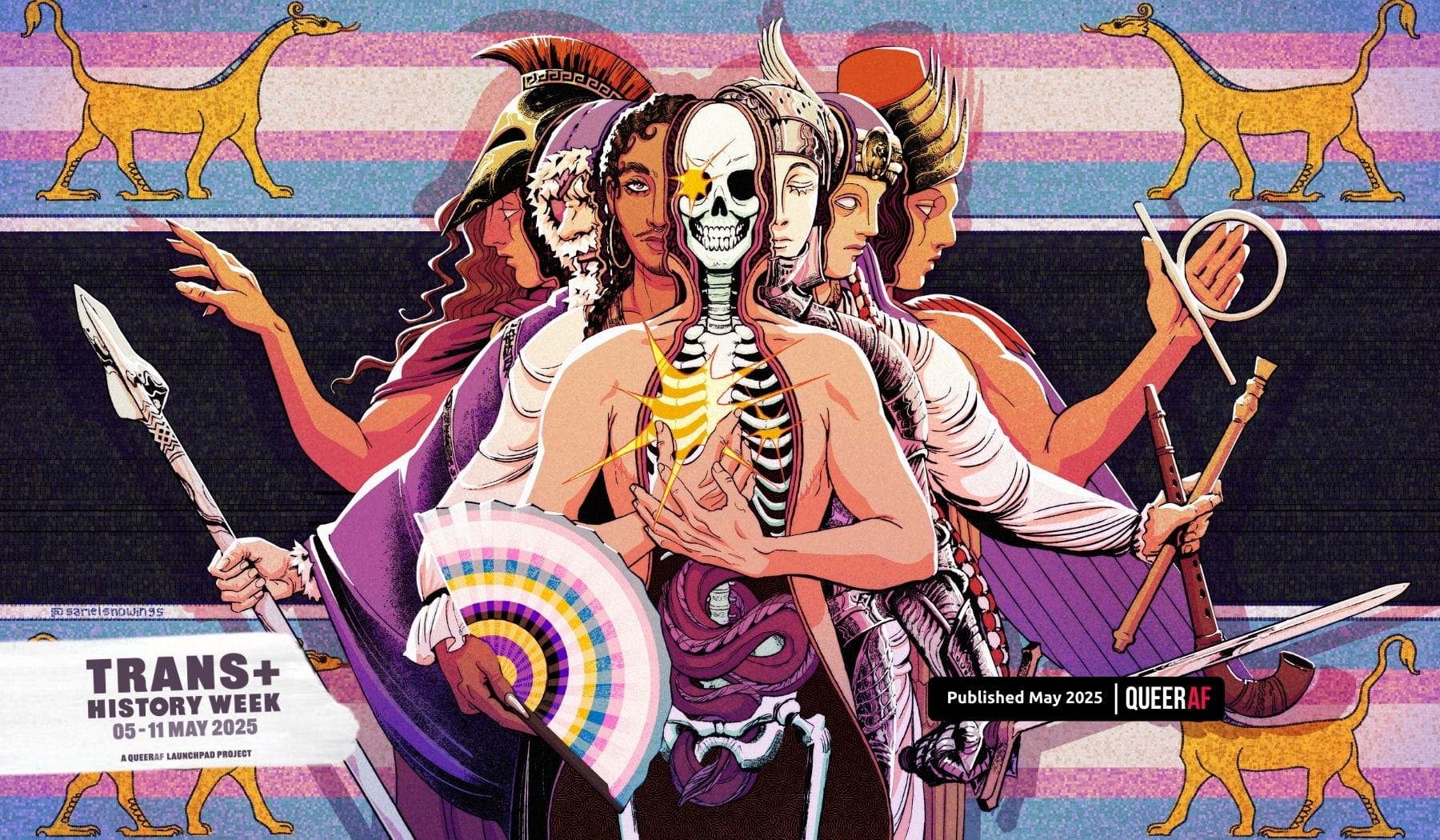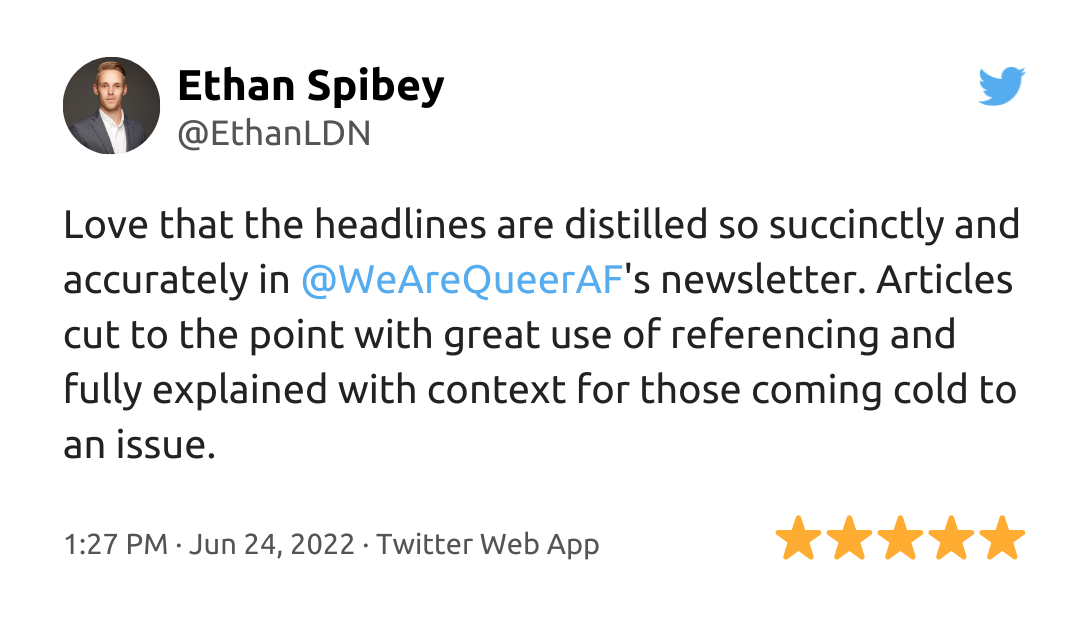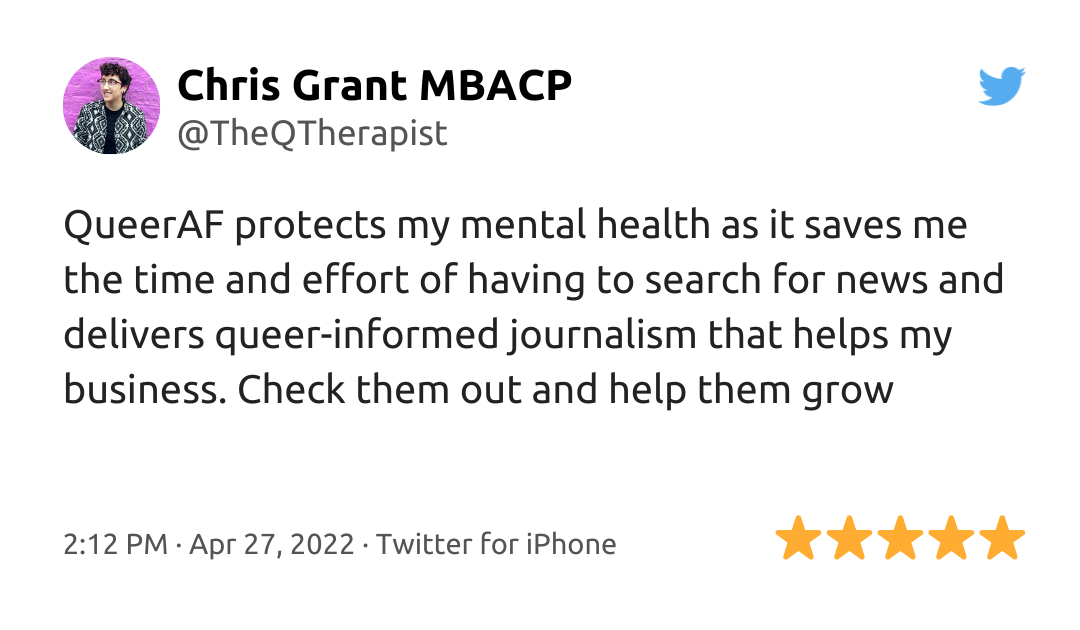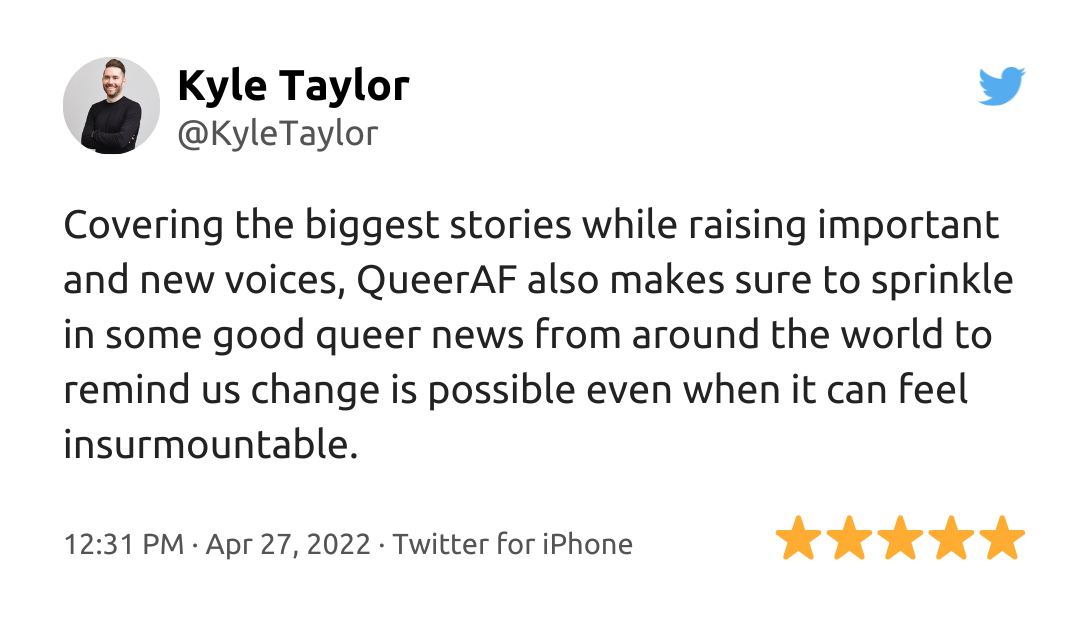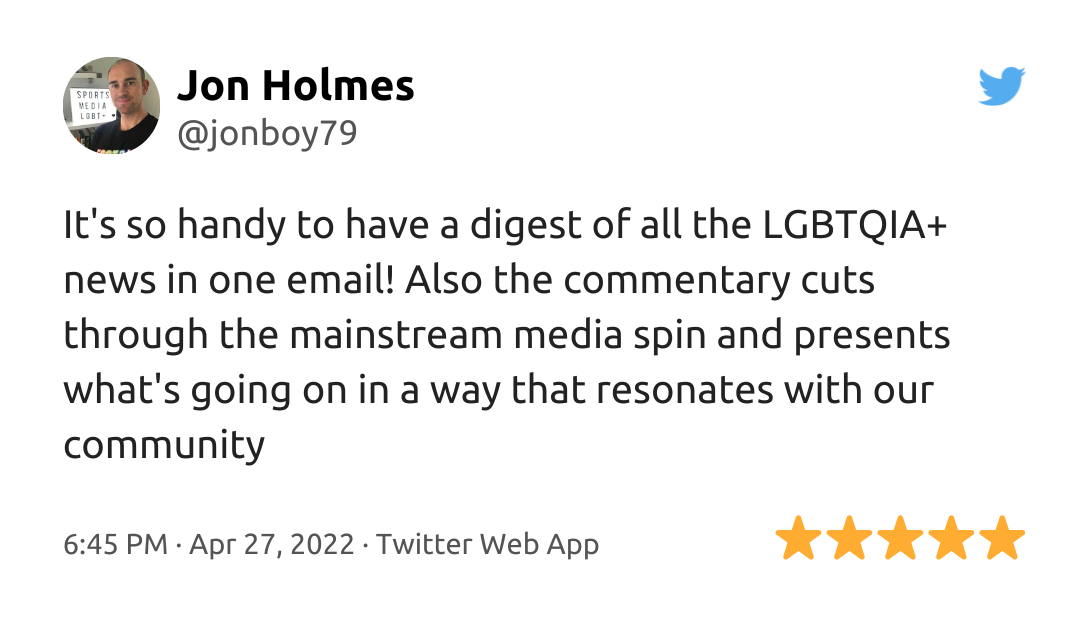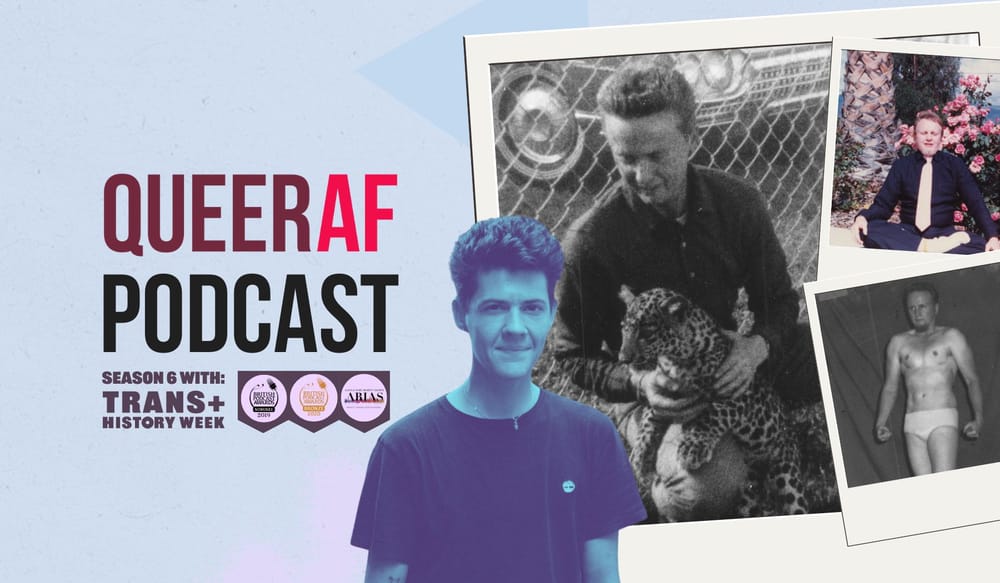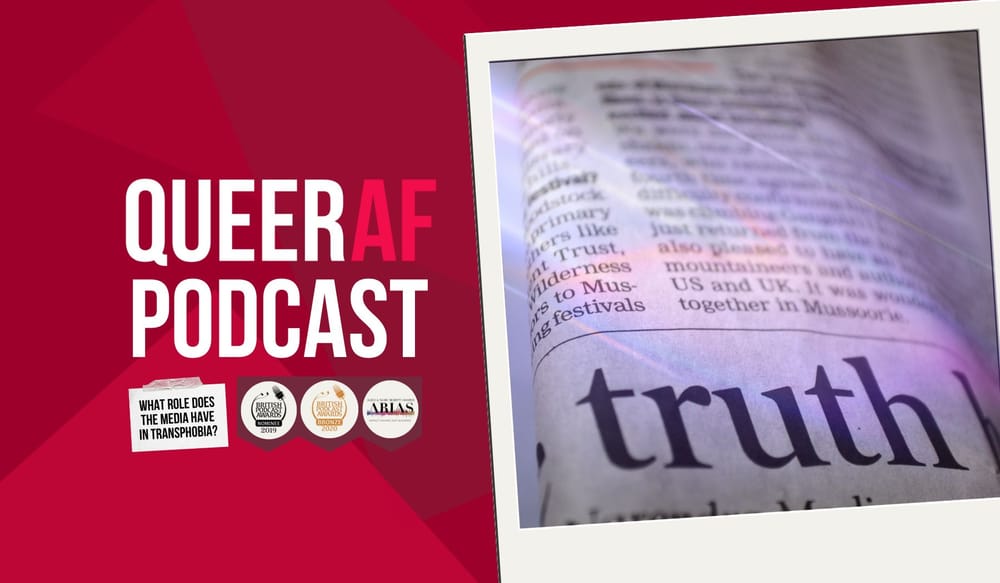
LGBTQIA+ folk stories were deliberatly erased by Stith Thompson, an American Scholar and Folklorist who decided to filter out queer and Trans+ stories to what has become the most important collection of folklore throughout all of human history. But we can't be erased, and thanks to researchers - we learn more and more gender diverse stories that have been told since the first words were ever written down.
Trans people are constantly told that we are a recent invention – a 21st Century ‘fad’. But, when we look to the ancient, ever-evolving, world of folklore, that accusation doesn’t hold up.
As an oral storyteller, I perform transgender folktales from across Eurasia. Whether in a smoky, crowded roundhouse or on a brightly lit theatre stage, I get to show people that our existence spans millennia.
Folktales are a rich tapestry of collectively-woven tellings and retellings of myths, legends and fairytales. They thrive on adaptation and any talk of ‘an original’ is usually guff.
Systems like the Aarne-Thompson-Uther Index (ATU) valiantly attempt to categorise as many variants of each tale as possible, showcasing how each generation and culture has made these stories their own. Each section of the Index has a name and a number, and a host of different versions of the story.
Cinderella, which has the coding ATU 510B, has over 800 variants, and there are many more lost to time or as-yet undiscovered. Folklore is an adaptable feast of stories to play with.
Where there are stories of magical gender transition, it stands to reason that there were people interested in it. The stories we do have can lead to hints of our gender diverse ancestors, in the ways gender diversity is explored or treated in folktales.
This collective ownership can be a double-edged sword. While people have been reading themselves into these stories since time began, there have also been deliberate attempts to remove queerness from folktales, which is why so many of us might have thought that queer and Trans+ stories don’t exist in fairy tales.
That bears repeating: There have been deliberate attempts to erase Trans+ and queer folk stories that show how far back we can be traced. Because of this, we may never find all the stories that have been obscured, forgotten or sanitised.
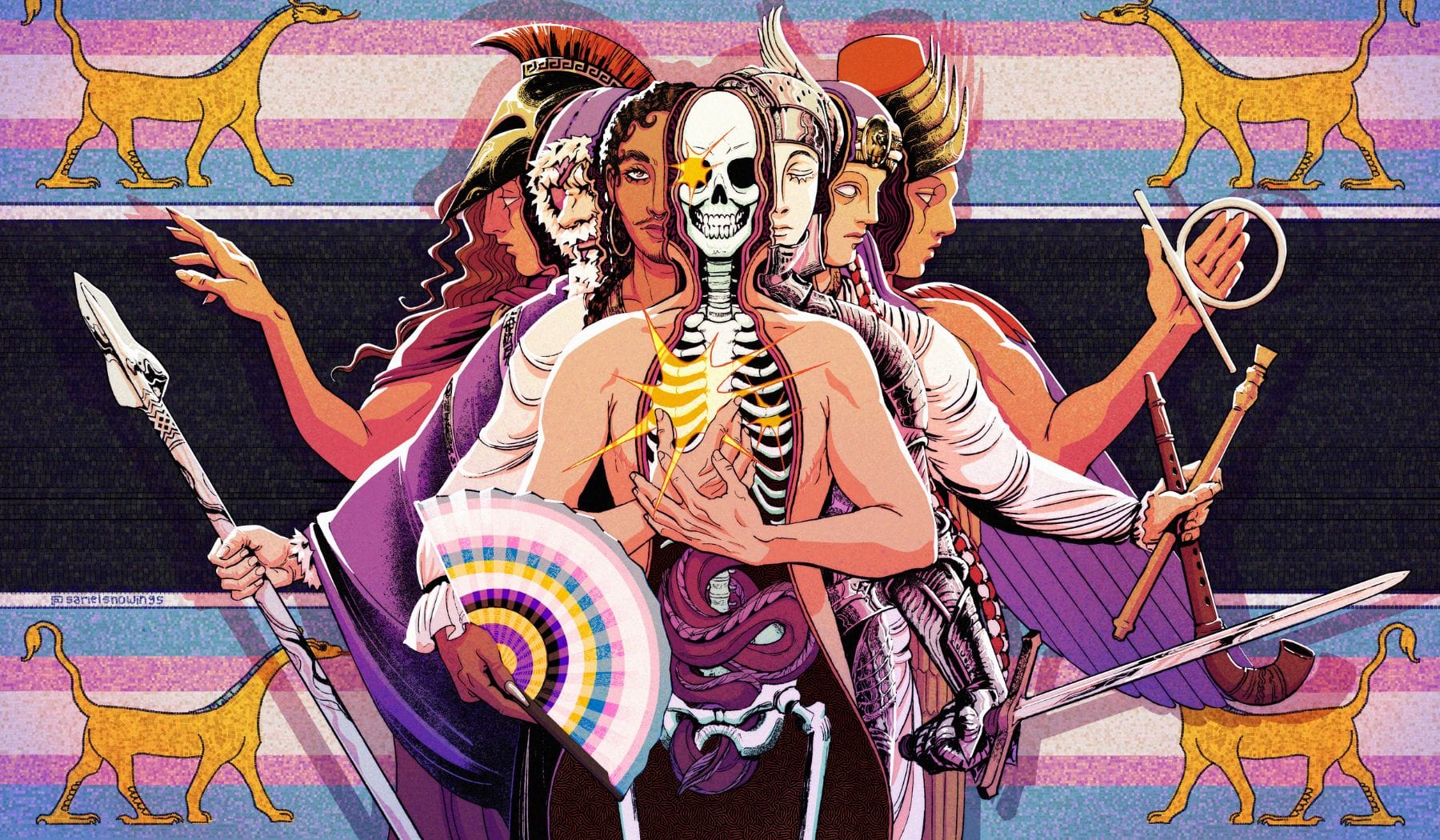
🎨 Artwork description, by Sariel Castaño Díaz
"A digital illustration portraying the prevalence and fluidity of transgender identities through the ages. The centre of the image is occupied by a stand-in for any modern person. We don’t see their face, as their skin is open down the middle and their skeleton is visible, representing how deep down we’re all human and made of the same materials as everyone else. To their left and right, like layers from a matryoshka doll, stand six characters that have historically represented different flavours of transgender identity and gender fluidity. They are all personalities mentioned in Gabriel’s article on the many roles transgender and gender-transformative people have held in folklore and mythology. From left to right, we have: the Greek hero Caeneus, Norse god Odin as a seiðrman, a 1970s inspired trans person of colour carrying a fan displaying the modern trans flag, non binary flag and intersex flag colours, an armoured knight representing “the Girl who Pretended to be a Boy”, one of the Roman gallae (priests of Kybele) and one of the Mesopotamian gala (priests of Inanna). They all stand in front of a mosaic decorated with the trans flag and Mesopotamian mushussu dragons."
So, where can we find Trans+ folk stories?
Well, look no further than some of the first examples of the written word anywhere in the world, from Mesopotamia – some three millennia ago.
Inscribed on Akkadian cuneiform tablets, the first recorded example of gender diversity features the Mesopotamian goddess Inanna/Ishtar.
She was able to change people’s sex and was rescued from a terrible journey to the underworld by an androgynous/genderless being called Asu-shu-namir because neither man nor woman could save her.
Afterwards, Asu-shu-namir and all like them were cursed to deal with mistreatment and misunderstanding, but Inanna declared her temples havens for gender diverse people.
Her priestesses, the Gallae, were frequently born male.
These tablets are thought to be over 2600 years old. Next time someone tells you we’re a modern phenomenon, remember we have records older than Jesus.
Skip forward a little, and Greek mythology contains a horde of gender-transgressive characters: Dionysus, raised as a girl; Caenis/Caeneus, the invulnerable hero; Tiresias, the Seer; Iphis; Leucippus and many others.
In a culture with so many gender transformative myths, does it really seem likely that no one was interested in it?
Greek mythology is a great place to find all kinds of gender variance, partly because so many versions have been so well recorded. The sheer diversity of gendered experience in Greek mythology means most of us can find a story that sings to us.
Fast forward a few centuries, and we can look to tales of the Norse god Loki, who is well-known for shifting sex and for mothering as many children as he fathered (if not more). But fewer people know that Odin the Allfather himself dressed as a woman and learned the art of seiðr. Seiðr was considered a form of ‘women’s magic’ and men who performed it were viewed as argr, a slur which translates to us as ‘unmanly’.
Both Odin and the real-world gender-transgressive witches known as seiðrmenn show gender transgression as powerful and magical. In a culture where argr was one of the deadliest slurs, that’s a pretty inspiring stance.
Even in the long centuries since these stories were widely told, there have been plenty of folktales about people like us. A whole section of the Aarne-Thompson-Uther Index is dedicated to stories featuring gender transformation.
ATU 514 is known as ‘Shift of Sex’ and contains over 25 known variants. Historically, ATU 514 has been treated as a disappointing side note – aberrant, patriarchal or unworthy of study. But despite this, there are enough versions of this tale to fill a book.
Broadly, ATU 514 tales go like this: a woman dresses as a man, overcomes obstacles, transforms into a man, gets married to a woman and lives happily ever after. In some, this character marries another gender-transgressive character. T4T joy? We love to see it.
What can we learn from this history?
In my performances, I get to witness first-hand the effects these tales have on audiences, regardless of where they sit on the gender spectrum.
Responses vary from delight to grief, with a massive dose of relief that so many of these characters are heroes who get a happy ending. While many of them still deal with bigotry or danger linked with their gender transgressions, they are resilient, beautiful and powerful.
In the face of the continuous accusations that our entire existence is a ‘trend’, many of us mourn for the stories that we will never get to hear.
So many people we might recognise as kin – even ancestors – lived their lives in secret or were deliberately erased from record. It can feel like we’ve been cast adrift without any tether to our lost histories. So these older stories of gender-transgressive desirability, joy, fierceness and beauty can be life-changing.
Mainstream discussion of transness often focuses on our bodies in a way that, ironically, totally eclipses them. It is also those who have the least to do with us who speak the loudest.
By performing these stories, we bring our bodies and our voices into the storytelling arena. We reclaim these powerful tales of trans joy, beauty and love. It’s time to subvert the conversation and bring it back to where it belongs: with us, our community and our history.
When we gather together, we are powerful, and, when we share stories of hope, we are able to dream again. In sharing these tales that have been told and retold for decades, centuries, and (for some) even millennia, we reaffirm our timelessness and reconnect with the broken thread of gender-diverse ancestry.
In doing that, we weave new futures.
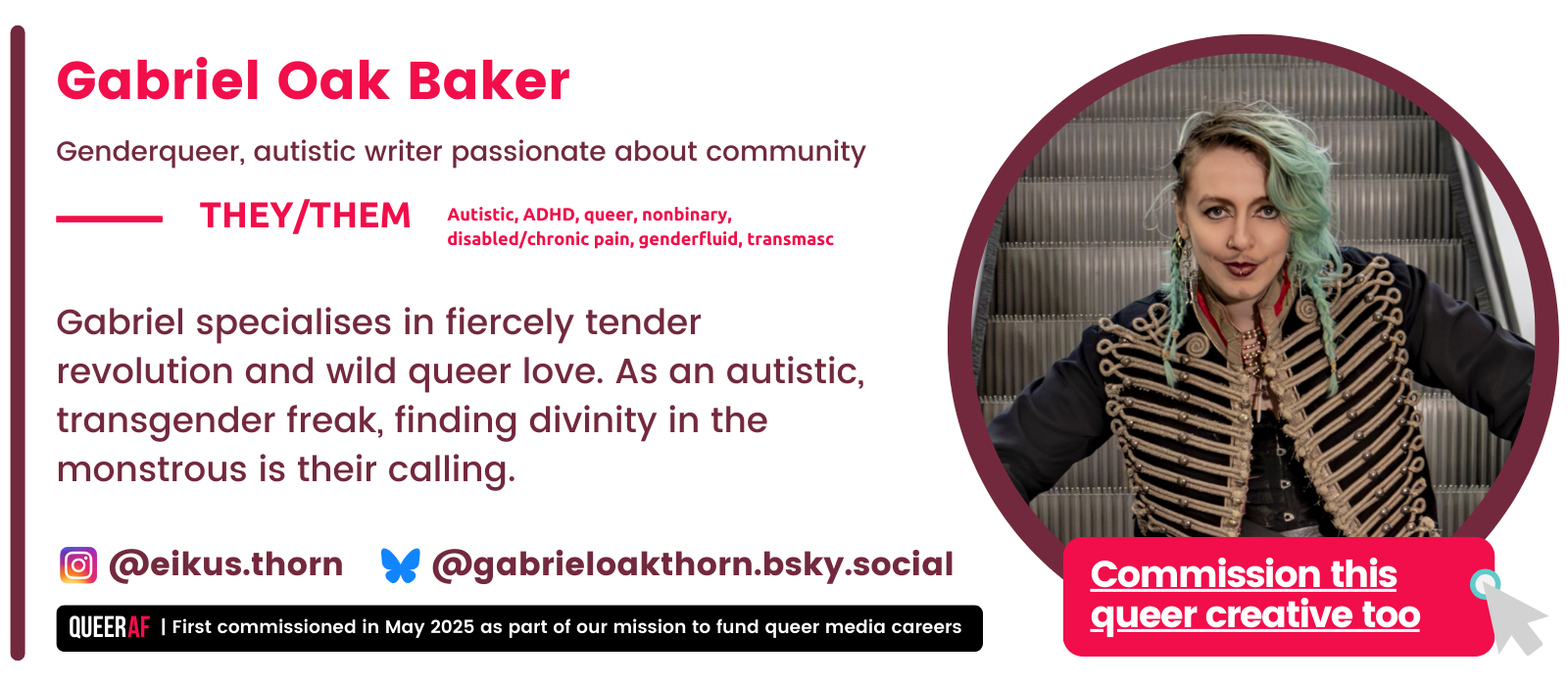
Did you just read that too? One dude thought he could erase our history. And for a while - he was successful. But that didn't last long.
Our history has been deliberately hidden. It takes a concerted effort to make it available to all.
That's what QueerAF and Trans+ History Week are up to - while investing in Trans+ creative's careers, so they can do it in even more platforms and media outlets.
In a time of acute political attention on Trans+ rights and a growing intensity of attacks in the media, it is a critical moment to expand the learning of our history.
Knowledge of our past is fundamental for our future liberation, so it’s crucial that the critical Pride season ahead is, again, grounded in our history.
You can help us get the word out, invest in more talent and ensure everyone here's our message by upgrading today, to support our unique approach to journalism and content creation.
One that, as a non-profit, sees us reinvest everything back into our mission to change the newsroom, to change the country. Help us fight back today.

